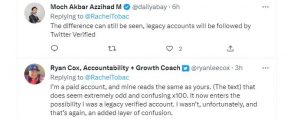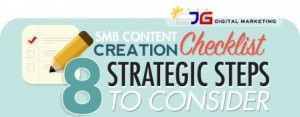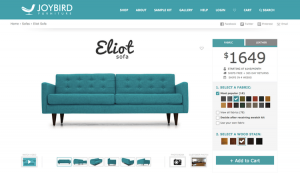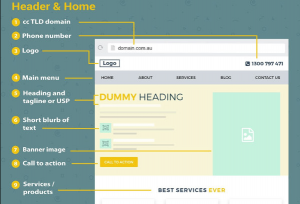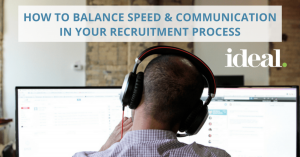In today’s competitive job market, it’s becoming increasingly difficult for companies to find suitable candidates and keep them engaged.
Tried-and-true recruitment methods, such as job postings and networking, are no longer as effective as they used to be. Today’s candidates seek roles that fit their passions, skill levels, and expected work/life balance.
For HR professionals tasked with finding the best talent, a recruitment app or also called applicant tracking software can be a godsend. These innovative tools allow recruitment teams to reach potential candidates across age demographics quickly and efficiently.
In this article, we will take a closer look at the difficulties of recruiting across age demographics and how recruitment apps can help. Recruitment teams can quickly identify candidates in their target age ranges and promote open positions faster with the right strategies – and the right recruitment app.
The Challenge of Multi-Generational Recruitment
The current workforce is one of the most diverse in history. There are now four distinct generations in the workforce: Baby Boomers, Gen Xers, Millennials, and Generation Z. Each generation has its own unique approach to work and life.
However, the large swath of generations does not equal availability. Each generation is looking for different things in a job and lifestyle.
Baby Boomers, for example, are largely concerned with stability and good benefits. Gen Xers are more likely to prioritize work/life balance and opportunities for growth. Millennials are attracted to companies with a strong social conscience. And Generation Z candidates look for fast-paced and creative environments.
This presents a challenge for recruitment teams looking to cast a wide net. HR teams looking to fill open roles in growing companies can find it difficult to advertise for candidates across age demographics without leaving out some critical aspects.
With budgets tight and high expectations, recruiters need to know that their efforts are not vain. How can you appeal to such a diverse group of candidates? And before you can appeal to them, where do you even find them?
Where Different Age Demographics Find Job Opportunities
Each generation approaches job searches differently. As technology advances, recruitment methods change, and each generation uses the most relevant recruitment strategies.
For example, while a member of the Baby Boomer generation may stop by your office to inquire about job openings, a Millennial is more likely to search for job postings online.
Let’s break down each demographic and see how they search for work:
Baby Boomers
Baby Boomers make up about a quarter of the workforce, and they’re also the most likely to be retired or nearing retirement age. However, they are still active in the workforce and have a lot to offer.
Baby Boomers are largely looking for stability and good benefits in their next role. They often find job opportunities through personal connections, such as networking events or referrals from friends and family.
This generation grew up when recruitment was limited to in-person interaction and print classified ads. They tend to seek recruitment opportunities through online job boards, such as Monster, Indeed, and LinkedIn. However, they are much more likely than other generations to turn to recruitment agencies for help finding a new position.
Gen Xers
Gen Xers are the second-largest generation in the workforce. The Gen X workforce peaked in 2008 and has since been overtaken by Millennials by number.
Gen X grew up with technology and is often an early adopter of new trends. Gen Xers use technology to seek out job opportunities and find the best fit for their skills and passions.
They are likely to use social media sites like LinkedIn, Facebook, and Twitter to follow companies they’re interested in. They also use job search engines like Indeed and Glassdoor to research potential employers.
Gen Xers are the most likely of any generation to use recruitment apps. They’re comfortable with using technology to facilitate their job search and want quick, easy access to job postings.
Millennials
Millennials have now overtaken Gen X by number in the workforce – and they are one of the most varied in terms of candidate diversity.
Most grew up during the recession and are therefore more cautious about their job choices. This has led to them taking longer to find their ideal career path and often sees them jumping between industries more often.
Millennials are likely to use social media sites like LinkedIn, Facebook, and Twitter to research potential employers. They also use job search engines like Indeed and Glassdoor to research potential employers.
However, they are much more likely than other generations to turn to recruitment agencies for help finding a new position.
Generation Z
Generation Z candidates are the youngest group in the workforce, and they grew up surrounded by technology. They tend to be early adopters of the latest recruitment trends.
While Gen Z utilizes many of the same technology as Millennials to find job opportunities, they often look for opportunities to set out on their path. Rather than apply for jobs with strict rules and regulations, they look for companies with a strong social conscience. They want to work for organizations that align with their values.
A plus for Gen Z is the ability to work remotely. Due to their age, they are more likely than other generations to be enrolled in school and need employment that can accommodate class schedules. Plus, the majority of Gen Z is expected to identify as non-white by 2026, which plays a role in workplace diversity initiatives and expectations.
Tips to Reach Multi-Generational Candidates
With such a variety of recruitment methods, it can be difficult to know where to start when appealing to different age demographics.
Here are a few tips to help you diversify your techniques and reach the best quality candidates:
1. Know Your Target Market
When searching for recruitment methods, it’s important to know your target market. Different age groups are familiar with varying strategies of recruitment.
If you’re trying to reach a wide range of candidates, use recruitment software that can target specific demographics based on location and industry.
By understanding who you’re trying to reach, you can increase your recruitment success and use targeted recruitment strategies that will give you great candidates.
2. Be Clear About Your Mission
Brand mission and values have to go hand in hand more than ever before. Millennials and Gen Z want to work for companies that align with their values, so recruitment software should allow them to find a company that suits them.
This can be done through a recruitment app that showcases an organization’s culture and mission statement or recruitment websites showcasing social consciousness.
To appeal to different age demographics, be clear about what your company represents and make it easy for candidates to find that information.
3. Develop an Ideal Candidate Profile
Once you have your goal and mission defined, you can begin writing your ideal candidate profile.
This document should contain details about the position, including recruitment requirements and expectations of an ideal candidate. Make sure to include what traits you value in a new hire for this role so recruitment software can match quality candidates with your company postings.
By creating this profile, recruitment software will be tailored to search out the best candidates for your specific role.
4. Use Technology to Streamline the Process
Technology has become an essential part of our lives, so it’s no surprise that it has also become a staple in recruitment strategies.
Different generations use different types of technology when looking for jobs. Millennials and Gen Z are more likely to use social media, and job search engines. However, don’t count out traditional recruitment approaches.
Social media is key for recruitment because it can be used to share your recruitment process with a wide range of audiences.
For example, if you’re looking for an administrative assistant, post the job on recruitment websites and social media sites geared toward this generation. You can also create a recruitment blog that discusses issues surrounding the position to attract quality candidates.
5. Showcase Employee Benefits and Culture
Employee benefits and company culture are important to all generations, but it’s especially important for Millennials and Gen Z.
Showcase these aspects of your company on recruitment websites, social media, and your career page.
Make sure that the information is easy to find and provides a clear picture of what it would be like to work for your company. This is often an easy way to attract quality candidates through recruitment websites.
6. Have a Mobile-Friendly Website
As more and more people access the internet through their phones, your website needs to be mobile-friendly. More than half of all candidates will search for jobs on their phones, so recruitment websites must be easy to navigate on the go.
Additionally, recruitment websites should be simple and easy to use. The layout is important when designing recruitment software because it can make the difference between a candidate applying or moving on.
7. Leverage Modern Recruitment Strategies
To attract multi-generational candidates, you have to be innovative. That’s why recruitment strategies are increasingly moving towards modern recruitment software, which allows organizations to reach potential candidates quickly and efficiently.
When using recruitment websites or apps, make sure they are user-friendly and allow job seekers to take the next step easily.
Modern recruitment strategies have revolutionized recruitment processes across all age demographics, so use recruitment software to find the right candidates for your company.
How to Enhance Candidate Search with a Recruitment App
One of the most effective ways to reach potential candidates is by using recruitment apps.
Also known as Applicant Tracking Systems (ATS), recruitment apps are designed to simplify recruitment processes by organizing job postings, resumes from applicants, and recruitment analytics.
Including recruitment software with recruitment, apps can significantly improve candidate search across all age demographics because it streamlines the recruitment process.
With recruitment apps, teams can easily connect with top talent and identify the best candidates for their organization. Plus, with real-time data and analytics, recruitment teams can track their recruitment progress and improve their recruitment strategies.
Here are just a few of the features that recruitment apps offer to help supercharge your multi-generational recruitment methods:
Sourcing Candidates Effectively and Efficiently
Hiring the best candidates begins by locating them. With recruitment apps, you can source candidates quickly and easily from a variety of different platforms.
Before jobs are posted, HR teams can prep the app with data about their recruitment needs. Then, recruitment apps can gather resumes from a range of sources, including recruitment websites and social media.
This feature alone makes recruitment apps more effective than recruitment websites or recruitment software because it collects information about potential candidates from multiple platforms at once. It also saves time by eliminating the need to upload resumes one-by-one.
Modern recruitment apps offer functionalities that allow you to post jobs on major job boards, social media sites, and your company website with the push of a button. Additionally, recruitment apps allow you to connect with potential candidates who have already applied to your company.
Scheduling Interviews and Tracking Communication
Recruitment apps can also save recruitment teams a lot of time by scheduling interviews and tracking communication with potential candidates.
Using smart job alerts, recruitment teams can easily locate top talent from recruitment websites thanks to automatic email alerts. Plus, they can use the app’s calendar feature to schedule interviews with potential candidates.
The recruitment app’s communication tracker also helps recruitment teams keep track of their interactions with potential candidates. This feature allows recruitment teams to keep a record of all communication, including emails, phone calls, and interviews.
Recruitment teams can use this information to determine whether a candidate is a good fit for the company.
Reducing Bias in the Hiring Process
Because recruitment teams can use recruitment apps to collect and track data about potential candidates, they’re less likely to be biased in the hiring process.
Recruitment teams can use recruitment apps to objectively assess resumes and identify the best candidates for their organization.
When recruitment teams reduce bias, they can compare candidates objectively across recruitment platforms. This can benefit those trying to reach demographics who place company culture and mission over salary.
Not only does this save recruitment teams time, but it can also help companies increase diversity by including qualified candidates who might otherwise be overlooked in the traditional recruitment process.
Humanizing the Recruitment Processes
Recruitment apps make recruitment processes more human by allowing recruitment teams to connect with potential candidates on a personal level.
As more candidates are looking for jobs that allow them to follow their passion and engage their world, recruitment teams can use recruitment apps’ social media features to personalize their recruitment efforts.
Recruitment teams can use recruitment apps to connect with candidates on social media platforms like Facebook, Twitter, and LinkedIn.
Then, recruitment teams can build rapport by getting to know candidates on a personal level before trying to sell them to the company behind the recruitment app.
By humanizing recruitment processes, recruitment teams can make potential candidates feel more comfortable with the idea of working for their company.
Analyzing Recruitment and Recruiter Performance
Recruitment apps also make recruitment processes more efficient by providing recruitment teams meaningful data to analyze recruitment performance.
For example, analysts can use recruitment app reports to monitor changes in their recruitment channels and the overall number of applicants they receive overtime.
This helps them determine whether specific recruitment methods are working better than others. Analysts can then use recruitment app analytic data to optimize recruitment teams’ recruitment strategies. This data can also help recruitment teams improve their employer branding.
Business & Finance Articles on Business 2 Community(26)
